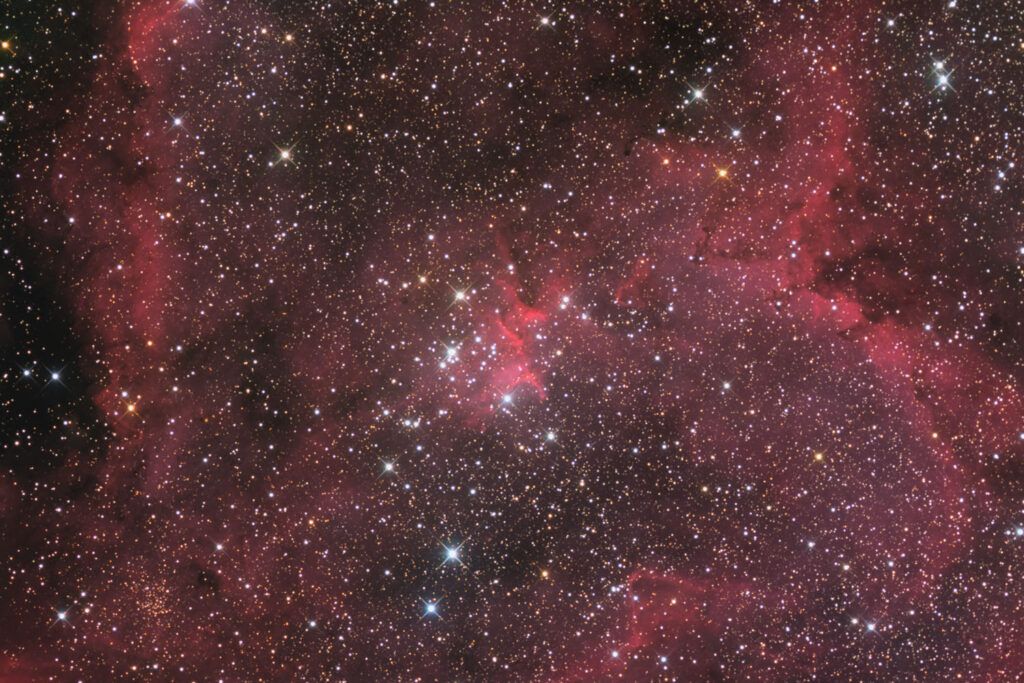Sh2-190
Heart of the Heart Nebula (IC 1805), Cassiopeia
- Description
- Technical
- Links
The Heart Nebula, IC 1805, Sharpless 2-190, lies some 7500 light years away from Earth and is located in the Perseus Arm of the Galaxy in the constellation Cassiopeia. It was discovered by William Herschel on 3 November 1787. It is an emission nebula showing glowing ionized hydrogen gas and darker dust lanes.
The brightest part of the nebula (a knot at its western edge) is separately classified as NGC 896, because it was the first part of the nebula to be discovered. The nebula’s intense red output and its morphology are driven by the radiation emanating from a small group of stars near the nebula’s center. This open cluster of stars, known as Collinder 26 or Melotte 15, contains a few bright stars nearly 50 times the mass of our Sun, and many more dim stars that are only a fraction of our Sun’s mass.
Telescope: ASA N16 f3.6
Mount: Astro Physics 3600GTO “El Capitan”
Camera: SBIG STL-11000M
Guider: SBIG STL-Internal
L: 30×5 mins = 150 mins, R: 10×5 mins = 50 mins, G: 12×5 mins = 60 mins, B: 12×5 mins = 60 mins
Total Imaging Time: 5h 20m
Data Imaged remotely over 2 nights during November & December 2009.
Data acquisition & Processing by David Churchill.
None

